Dual targeting of microtubule and topoisomerase II by α-carboline derivative YCH337 for tumor proliferation and growth inhibition
- PMID: 25840421
- PMCID: PMC4496195
- DOI: 10.18632/oncotarget.3264
Dual targeting of microtubule and topoisomerase II by α-carboline derivative YCH337 for tumor proliferation and growth inhibition
Abstract
Both microtubule and topoisomerase II (Top2) are important anticancer targets and their respective inhibitors are widely used in combination for cancer therapy. However, some combinations could be mutually antagonistic and drug resistance further limits their therapeutic efficacy. Here we report YCH337, a novel α-carboline derivative that targets both microtubule and Top2, eliciting tumor proliferation and growth inhibition and overcoming drug resistance. YCH337 inhibited microtubule polymerization by binding to the colchicine site and subsequently led to mitotic arrest. It also suppressed Top2 and caused DNA double-strand breaks. It disrupted microtubule more potently than Top2. YCH337 induced reversible mitotic arrest at low concentrations but persistent DNA damage. YCH337 caused intrinsic and extrinsic apoptosis and decreased MCL-1, cIAP1 and XIAP proteins. In this aspect, YCH337 behaved differently from the combination of vincristine and etoposide. YCH337 inhibited proliferation of tumor cells with an averaged IC50 of 0.3 μM. It significantly suppressed the growth of HT-29 xenografts in nude mice too. Importantly, YCH337 nearly equally killed different-mechanism-mediated resistant tumor cells and corresponding parent cells. Together with the novelty of its chemical structure, YCH337 could serve as a promising lead for drug development and a prototype for a dual microtubule/Top2 targeting strategy for cancer therapy.
Keywords: YCH337; antitumor activity; microtubule; topoisomerase II; α-carboline derivative.
Conflict of interest statement
The authors declare no conflicts of interest related to this work.
Figures

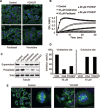
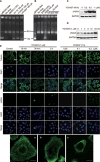
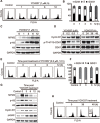
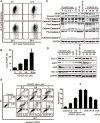
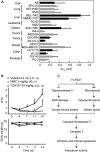
Similar articles
-
DTA0100, dual topoisomerase II and microtubule inhibitor, evades paclitaxel resistance in P-glycoprotein overexpressing cancer cells.Eur J Pharm Sci. 2017 Jul 15;105:159-168. doi: 10.1016/j.ejps.2017.05.011. Epub 2017 May 11. Eur J Pharm Sci. 2017. PMID: 28502672
-
A novel bis-indole destabilizes microtubules and displays potent in vitro and in vivo antitumor activity in prostate cancer.Cancer Chemother Pharmacol. 2011 Feb;67(2):293-304. doi: 10.1007/s00280-010-1319-8. Epub 2010 Apr 11. Cancer Chemother Pharmacol. 2011. PMID: 20383708
-
Discovery of a Series of Acridinones as Mechanism-Based Tubulin Assembly Inhibitors with Anticancer Activity.PLoS One. 2016 Aug 10;11(8):e0160842. doi: 10.1371/journal.pone.0160842. eCollection 2016. PLoS One. 2016. PMID: 27508497 Free PMC article.
-
Regulation of topoisomerase II stability and activity by ubiquitination and SUMOylation: clinical implications for cancer chemotherapy.Mol Biol Rep. 2021 Sep;48(9):6589-6601. doi: 10.1007/s11033-021-06665-7. Epub 2021 Sep 2. Mol Biol Rep. 2021. PMID: 34476738 Free PMC article. Review.
-
Dual Inhibitors of Human DNA Topoisomerase II and Other Cancer-Related Targets.J Med Chem. 2020 Feb 13;63(3):884-904. doi: 10.1021/acs.jmedchem.9b00726. Epub 2019 Oct 21. J Med Chem. 2020. PMID: 31592646 Review.
Cited by
-
Copper Complexes as Anticancer Agents Targeting Topoisomerases I and II.Cancers (Basel). 2020 Oct 5;12(10):2863. doi: 10.3390/cancers12102863. Cancers (Basel). 2020. PMID: 33027952 Free PMC article. Review.
-
The Novel Nature Microtubule Inhibitor Ivalin Induces G2/M Arrest and Apoptosis in Human Hepatocellular Carcinoma SMMC-7721 Cells In Vitro.Medicina (Kaunas). 2019 Aug 12;55(8):470. doi: 10.3390/medicina55080470. Medicina (Kaunas). 2019. PMID: 31409007 Free PMC article.
-
Novel PARP1/2 inhibitor mefuparib hydrochloride elicits potent in vitro and in vivo anticancer activity, characteristic of high tissue distribution.Oncotarget. 2017 Jan 17;8(3):4156-4168. doi: 10.18632/oncotarget.13749. Oncotarget. 2017. PMID: 27926532 Free PMC article.
-
Identification of mitochondrial ATP synthase as the cellular target of Ru-polypyridyl-β-carboline complexes by affinity-based protein profiling.Natl Sci Rev. 2024 Jul 5;11(8):nwae234. doi: 10.1093/nsr/nwae234. eCollection 2024 Aug. Natl Sci Rev. 2024. PMID: 39114378 Free PMC article.
-
Tanshinone I inhibits tumor angiogenesis by reducing Stat3 phosphorylation at Tyr705 and hypoxia-induced HIF-1α accumulation in both endothelial and tumor cells.Oncotarget. 2015 Jun 30;6(18):16031-42. doi: 10.18632/oncotarget.3648. Oncotarget. 2015. PMID: 26202747 Free PMC article.
References
-
- Jackson JR, Patrick DR, Dar MM, Huang PS. Targeted anti-mitotic therapies: can we improve on tubulin agents? Nat Rev Cancer. 2007;7:107–117. - PubMed
-
- Kavallaris M. Microtubules and resistance to tubulin-binding agents. Nat Rev Cancer. 2010;10:194–204. - PubMed
-
- Kufe DW PR, Weichselbaum RR, Bast RC, Gansler TS, Holland JF, et al., editors. Part VI Cancer Management. Holland-Frei Cancer Medicine. 6th ed. Vol. 2. Hamilton: BC Decker; 2003. pp. 1195–2290.
-
- Kaur R, Kaur G, Gill RK, Soni R, Bariwal J. Recent developments in tubulin polymerization inhibitors: An overview. Eur J Med Chem. 2014;87C:89–124. - PubMed
Publication types
MeSH terms
Substances
LinkOut - more resources
Full Text Sources
Other Literature Sources
Miscellaneous

